Discovering My Passion for Public Arts & Humanities
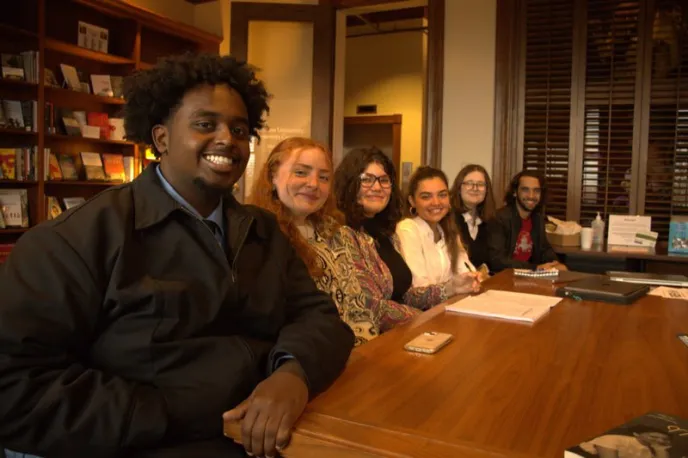
The 2022–2023 Engaged Humanities Network Undergraduate Research team in the Tolley Humanities Building on Syracuse University campus. From left to right: Aidaruus Shirwa, Katherine Miles, Lizmarie Monetmayor, Maggie Sardino, Sophie Stokoe, and Justo Antonio Triana. Image courtesy of Brice Nordquist.
Syracuse University’s Engaged Humanities Network (EHN) builds relationships of mutual support among faculty, students, staff, and community partners across the university, city, and region. Through creative work, curricular development, public programming, graduate research assistantships, and a team of undergraduate research assistants, EHN is embedded in projects across the City of Syracuse.
I came to the EHN as a sophomore through my studies in Citizenship and Civic Engagement—a unique major at SU which prepares students to participate in ethical community engagement. I was attracted to the EHN because of my commitment to place. As a lifetime resident of Syracuse, I am committed to strengthening the relationships between SU and surrounding communities.
When I began working as an EHN research assistant, its program structures did not exist, with the exception of the undergraduate research team and a committed group of faculty and staff mentors. We were clearly invested in ethical community engagement, but what our work would look like and what the EHN would be was still being developed. We knew that in order to maximize the impact of the engaged humanities, there needed to be space for undergraduate students, graduate students, faculty, staff, and, importantly, community partners to have their perspectives heard and seriously considered. Over the past three years, the EHN has grown to include 28 associated projects involving over 250 faculty, students, and community partners from 25 different departments, 8 colleges, and 20 community-based organizations.
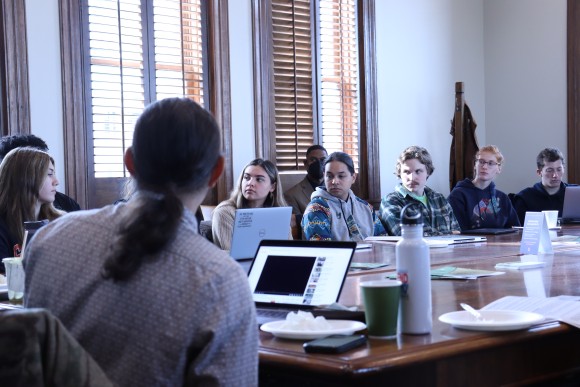
Being involved in the creation of the EHN instilled in me the belief that through publicly engaged research and community work I could create tangible institutional and social change. It created the infrastructure for me to pursue innovative, community centered projects.
What can engaged humanities research look like?
Through the EHN I have been introduced to an expansive range of engaged humanities research projects: from working on a youth storytelling project to conducting a nation-wide analysis of assessments of community engaged programming to directing a documentary on local housing redevelopments.
In the summers of 2020 and 2021, I was a research assistant with the Narratio Fellowship, an intensive storytelling and leadership program aimed at providing resettled refugee youth with the opportunities and tools to share their stories and creative works locally and on the world stage. I helped facilitate workshop sessions and served as the program’s documentarian. This involved documenting the Fellows’ experiences through photography, video, narrative-based observation and in-depth interviews. As a documentarian, I provided the program’s organizers with a clearer picture of the Fellows’ experiences during workshops and culminated in a public profile series on the Fellows. This experience introduced me to the importance of centering community members in the assessment of publicly engaged arts and humanities projects, especially when universities are involved.
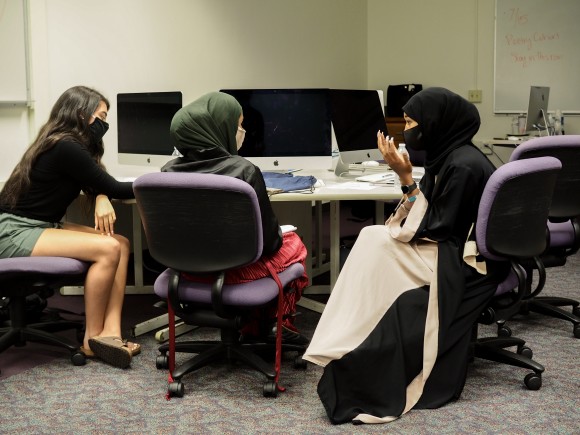
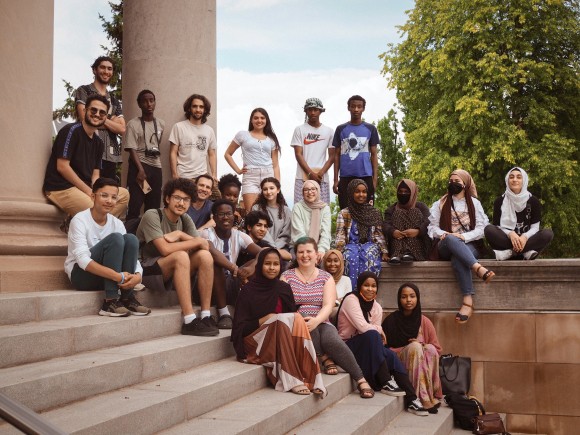
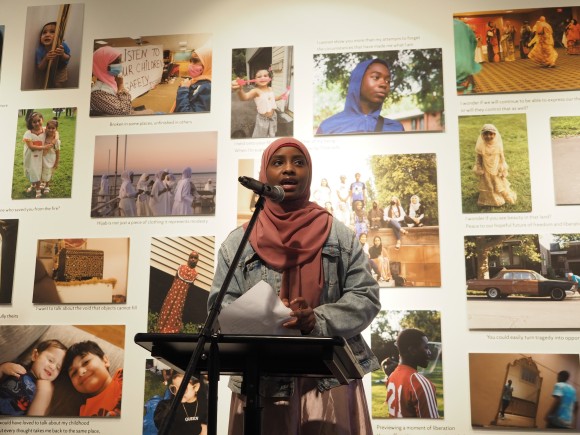
During the summer of 2021, I became aware of an organization (Blueprint 15) which planned to raze several public housing complexes in Syracuse and replace them with mixed-income housing. On first listen, the plan sounded like a great opportunity for the city. As I investigated the outcomes of communities where similar plans were implemented, I became increasingly alarmed. While communities did experience economic growth, there were also less publicized harmful effects: the displacement of public housing residents and the disruption of public housing communities disproportionately inhabited by communities of color.
After discovering these less publicized outcomes and speaking with residents of Syracuse’s public housing, I realized that I had an opportunity to use my storytelling skills to elevate the perspectives of residents and encourage Blueprint 15 to address the project’s potential for community displacement. To help tell this story, I decided to create a documentary. The writing, directing and editing of the film posed many challenges. Throughout the documentary’s creation, I had to teach myself how to construct a film’s arc, gather b-roll, record interviews and edit video. It also required me to disrupt departmental silos. I collaborated closely with architecture professors and professional architects, who helped me to understand how design and structural integrity impacted discussions around public housing. I consulted public policy analysts who provided key insights to the technical dimensions of mixed-income housing and public-private partnerships. I also sought advice from writing professors on the narrative arc of the documentary.
Through the documentary project I was also navigating the larger environment that the university exists within. Current and former public housing residents served as both interviewees and my most important advisors. Getting to this point, where residents were active collaborators, was not immediate. Most undergraduate students doing engaged humanities research are forced to confront the historic and contemporary tensions between universities and their surrounding communities. My research did not begin when I started conducting interviews; it started with informal conversations and relationship building with community members.
Ultimately, I produced “A Blueprint for Re-renewal” which presents stories from residents of their experiences living in public housing and explores current plans to replace the complex with mixed-income housing. I organized the first screening and panel discussion for the film. I created media toolkits, invited journalists and collaborated with eight community-based organizations to publicize the event.
Over fifty people attended the first screening. During the open panel discussion, attendees shared a range of responses: polished political statements, impassioned demands, genuine inquiries, and scathing critiques. Current and former residents voiced frustration with the lack of representation during the planning stages of the redevelopment and called for proper support for residents to participate in community meeting. David Rufus, a former resident of Pioneer Homes and member of the New York Civil Liberties Union, said, “One thing that is critically important is that people have the ability to express their concerns and opinions without any concern. Residents in public housing have so many issues to deal with. Shelter, rent, heating, keeping their families safe and keeping the community safe and sanitized.”
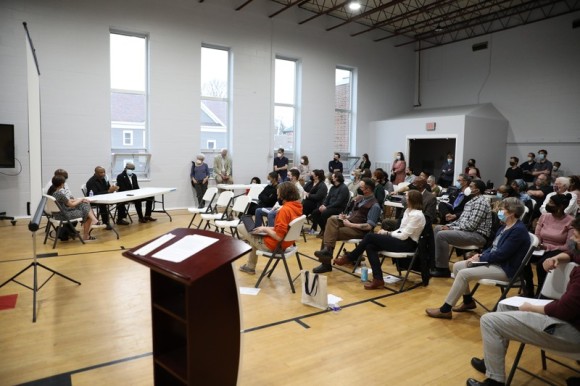
The problems “A Blueprint For Re-renewal” exposed and the panel discussion I arranged were covered by local news outlets. Blueprint 15 acted to address some concerns, including inviting a member of the refugee community to join their outreach committee and becoming more transparent by releasing detailed maps and providing descriptions of who would own and operate the buildings. Plans for transforming the public housing site are still moving forward, but centering resident voices through the documentary led to more accountability and greater input from a range of stakeholders.
Charting my own path forward
As I continued to work within public storytelling projects, I became certain that this was the work I am meant to do. Once I realized I wanted to pursue publicly engaged humanities as a future career, it was a matter of navigating how to carve this path out. In my junior year, I began to seek out opportunities to expand my understanding of community-based research. During fall 2021, I applied for a Canada Fulbright MITACS Globalink scholarship to conduct research at the Electronic Textual Cultures Lab (ETCL) at the University of Victoria, Canada over the summer.
In December 2022, I received news that I had been awarded the scholarship and would conduct research at the ETCL. That summer was a life changing experience and opened my eyes to the connections between digital humanities and engaged humanities research. During that time, I conducted research on knowledge diversity and market consolidation in the academic publishing industry. I also helped to organize the Digital Humanities Summer Institute (DHSI), a gathering of hundreds of scholars to share cutting-edge digital humanities work. During the Institute, I took a course on social knowledge creation which explored Wikimedia and digital knowledge commons.
While working on my application for the Marshall Scholarship (which fully funds young citizens of the United States to study in the United Kingdom at the graduate level), I began to visualize my path forward. I realized that completing a master’s degree in digital humanities would provide the training in digital storytelling, data visualization and open access publishing that I would need to develop innovative community-based storytelling projects. The applied anthropology and community arts master’s program at Goldsmiths, University of London, will enable me to gain skills and experience with community-based research methods.
This past winter, I received news that I was one of forty students from across the United States chosen to be a Marshall Scholar, enabling me to continue my path towards publicly engaged humanities work.
Having the support of the EHN has been instrumental in helping me discover potential collaborators, teaching me skills to create interdisciplinary and boundary spanning engaged humanities projects and providing me with models of what this work can look like. The EHN introduced me to the power of public humanities and has been instrumental in choosing to pursue community-based storytelling as a future career path.
Maggie Sardino is a recent graduate of Syracuse University with degrees in writing & rhetoric and citizenship & civic engagement. She is invested in empowering and transforming communities through innovative storytelling. As a Marshall Scholar, Maggie will be pursuing her master’s in digital humanities at King’s College London in the fall.